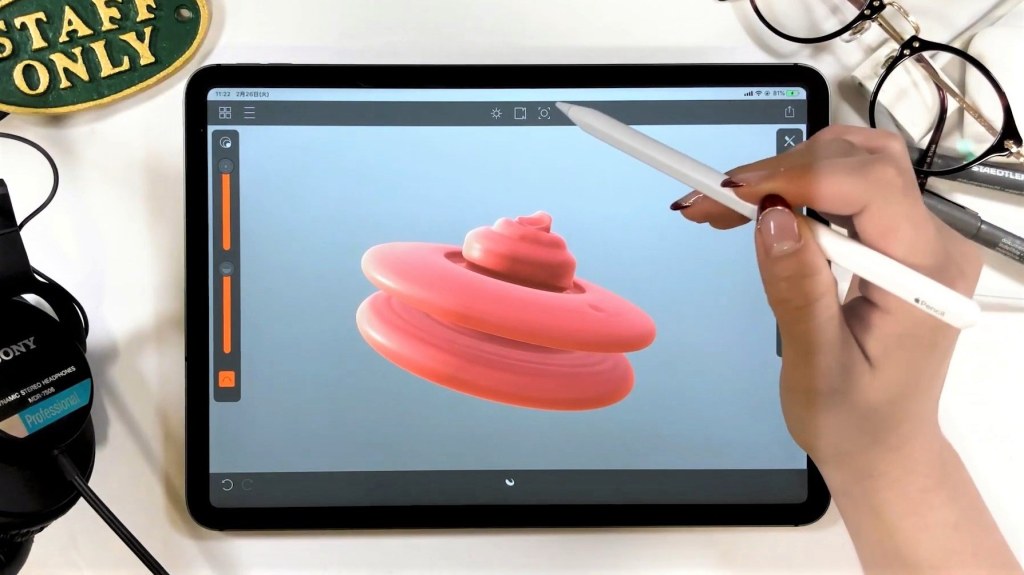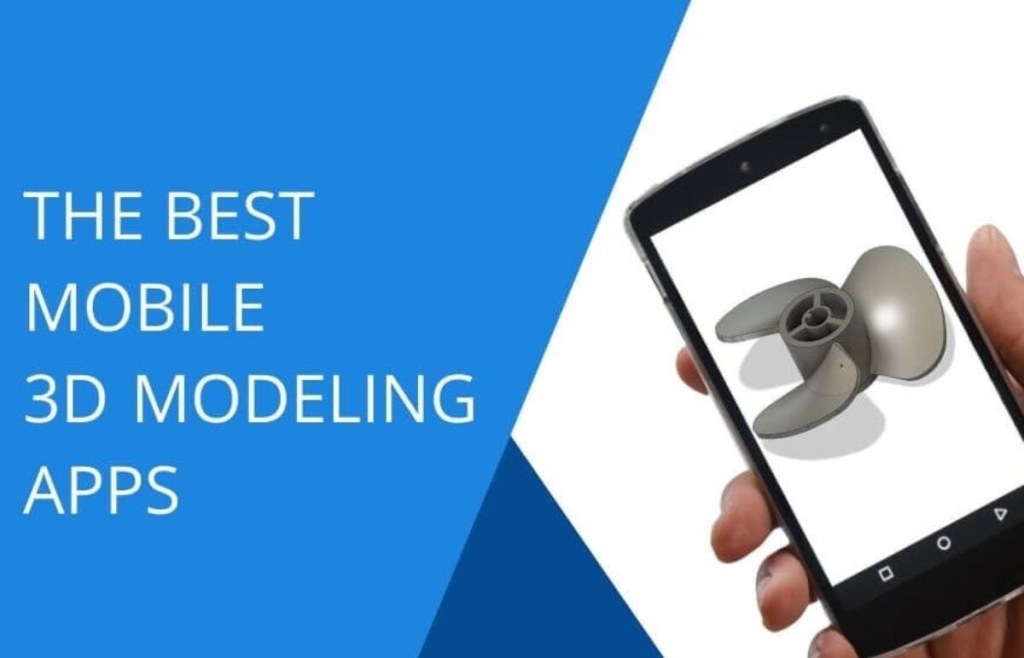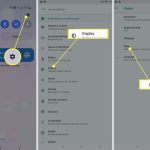Unleash The Power Of Android 3D App Development: Transforming Ideas Into Reality With Our Click-Worthy Solutions
Android 3D App Development: Exploring the Future of Mobile Applications
Introduction
Dear Readers,
Welcome to our in-depth article on Android 3D app development. In this digital age, mobile applications play a vital role in our lives, offering convenience, entertainment, and endless possibilities. With the emergence of 3D technology, app developers have been able to create immersive and visually stunning experiences for users.
3 Picture Gallery: Unleash The Power Of Android 3D App Development: Transforming Ideas Into Reality With Our Click-Worthy Solutions
In this article, we will dive deep into the world of Android 3D app development, exploring its potential, benefits, and challenges. Whether you are a seasoned developer or just starting your journey, this article aims to provide valuable insights and knowledge on this exciting field.
Table of Contents
Section
Description
1. Introduction
An overview of the article and its objectives

Image Source: all3dp.com
2. What is Android 3D App Development?
An explanation of the concept and its significance
3. Who Can Benefit from Android 3D App Development?
A discussion on the target audience and potential applications
4. When to Consider Android 3D App Development?
Insights on the appropriate scenarios for utilizing this technology
5. Where to Start with Android 3D App Development?
Useful resources and tools for beginners
6. Why Choose Android 3D App Development?
The advantages and disadvantages of adopting this approach

Image Source: ytimg.com
7. How to Develop Android 3D Apps?
A step-by-step guide on the development process
8. Frequently Asked Questions (FAQ)
Common queries and their answers
9. Conclusion
A summary of key takeaways and a call to action
10. Final Remarks
Important considerations and closing thoughts
1. What is Android 3D App Development?
Android 3D app development refers to the process of creating mobile applications that incorporate three-dimensional elements and graphics. It leverages the power of modern smartphones and tablets, enabling developers to build immersive experiences that go beyond the conventional 2D user interface.

Image Source: sculpteo.com
By utilizing 3D technology, developers can add depth, realism, and interactivity to their applications. This opens up a whole new world of possibilities, including virtual reality (VR), augmented reality (AR), and interactive gaming experiences.
Android 3D app development requires specialized knowledge and skills in 3D modeling, rendering, animation, and programming. Developers need to have a solid understanding of the Android platform, as well as the tools and frameworks available for 3D app development.
Advantages of Android 3D App Development
1. Enhanced User Experience: 3D elements can create a more engaging and memorable user experience, leading to increased user satisfaction and retention.
2. Realistic Visuals: 3D graphics can provide a higher level of realism, allowing developers to create virtual environments and objects that closely resemble the real world.
3. Interactivity: With 3D technology, users can interact with objects and environments in a more natural and intuitive way, enhancing the overall user experience.
4. Gaming and Entertainment: Android 3D app development opens up new possibilities for creating immersive games and entertainment experiences that captivate users.
5. Competitive Advantage: By leveraging 3D technology, developers can differentiate their apps from the competition and attract a larger user base.
Disadvantages of Android 3D App Development
1. Higher Development Complexity: Implementing 3D elements in an app requires additional skills, time, and resources, increasing the overall development complexity.
2. Performance Requirements: 3D graphics can be resource-intensive, requiring powerful hardware and potentially limiting the target audience to high-end devices.
3. Learning Curve: Developers who are new to 3D app development may face a steep learning curve, requiring time and effort to acquire the necessary skills and knowledge.
4. Compatibility Challenges: Ensuring compatibility across different Android devices and OS versions can be more challenging when working with 3D graphics.
5. Limited Use Cases: While 3D app development offers exciting possibilities, it may not be suitable or necessary for all types of applications.
2. Who Can Benefit from Android 3D App Development?
Android 3D app development has the potential to benefit various industries and individuals, including:
1. Game Developers: 3D graphics can revolutionize the gaming industry, allowing developers to create visually stunning and immersive gaming experiences.
2. Architects and Interior Designers: With 3D visualization, architects and interior designers can showcase their designs in a more realistic and interactive manner.
3. Education and Training: 3D apps can enhance educational materials, providing students with interactive and engaging learning experiences.
4. Marketing and Advertising: Brands can utilize 3D technology to create captivating advertisements and interactive product demonstrations.
5. Virtual Reality (VR) and Augmented Reality (AR): 3D app development is essential for creating VR and AR experiences, such as virtual tours, interactive museums, and training simulations.
6. Entertainment and Media: Movies, animations, and interactive storylines can be brought to life with 3D graphics, captivating audiences in new and exciting ways.
3. When to Consider Android 3D App Development?
Android 3D app development should be considered when:
1. Creating Immersive Experiences: If your app aims to provide an immersive and visually engaging experience for users, incorporating 3D elements can greatly enhance its appeal.
2. Showcasing Products or Designs: Architects, interior designers, and product manufacturers can leverage 3D app development to showcase their creations in a more realistic and interactive manner.
3. Building Games or Entertainment Apps: If you are developing a game or entertainment app, 3D graphics can take the user experience to the next level, increasing engagement and enjoyment.
4. Exploring Virtual Reality (VR) or Augmented Reality (AR): If you are interested in creating VR or AR experiences, 3D app development is a fundamental requirement.
5. Differentiating from Competitors: By incorporating 3D elements into your app, you can stand out from the competition and offer users something unique and captivating.
4. Where to Start with Android 3D App Development?
Getting started with Android 3D app development can be an exciting but challenging journey. Here are some useful resources and tools to help you get started:
1. Learning Resources and Tutorials: Online platforms like Udemy, Coursera, and YouTube offer a wide range of courses and tutorials on 3D app development. These resources can help you learn the necessary skills and techniques.
2. 3D Modeling and Animation Software: To create 3D assets for your app, you will need specialized software such as Blender, Autodesk Maya, or 3ds Max.
3. Game Engines and Frameworks: Game engines like Unity and Unreal Engine provide powerful tools and frameworks for developing 3D apps, including support for Android devices.
4. Android Development Tools: Familiarize yourself with Android Studio, the official integrated development environment (IDE) for Android app development. It offers a range of tools and features specifically designed for Android development.
5. Online Communities and Forums: Joining online communities such as Stack Overflow, Reddit, and forums dedicated to Android and 3D app development can provide valuable insights, tips, and support from experienced developers.
5. Why Choose Android 3D App Development?
Android 3D app development offers numerous advantages, but it also comes with its own set of challenges. Let’s explore the reasons why you should consider this approach:
Advantages of Android 3D App Development
1. Enhanced User Experience: 3D elements can create a more immersive and engaging user experience, leading to increased user satisfaction and retention.
2. Realistic Visuals: By leveraging 3D technology, developers can create lifelike graphics and virtual environments that closely resemble the real world.
3. Interactive and Intuitive: With 3D app development, users can interact with objects and environments in a more natural and intuitive way, enhancing the overall usability of the app.
4. Gaming and Entertainment: Android 3D app development is ideal for creating immersive gaming experiences and entertainment apps that captivate users.
5. Differentiation: By incorporating 3D elements, you can differentiate your app from the competition and attract a larger user base.
Disadvantages of Android 3D App Development
1. Higher Development Complexity: Implementing 3D elements in an app requires additional skills, time, and resources, increasing the overall development complexity.
2. Performance Requirements: 3D graphics can be resource-intensive, potentially limiting the target audience to high-end devices and requiring careful optimization.
3. Learning Curve: Developers who are new to 3D app development may face a steep learning curve, requiring time and effort to acquire the necessary skills and knowledge.
4. Compatibility Challenges: Ensuring compatibility across different Android devices and OS versions can be more challenging when working with 3D graphics.
5. Limited Use Cases: While 3D app development offers exciting possibilities, it may not be suitable or necessary for all types of applications.
6. How to Develop Android 3D Apps?
Developing Android 3D apps requires careful planning, technical expertise, and the right tools. Here is a step-by-step guide to help you get started:
1. Define Your App’s Objective: Clearly define the purpose and objectives of your app. Identify how 3D elements can enhance the user experience and align with your app’s goals.
2. Conceptualize and Design: Create a concept and design for your app, considering factors such as user interface, navigation, and the incorporation of 3D elements.
3. 3D Modeling and Animation: Use specialized software to create 3D models and animations that will be integrated into your app. Pay attention to details and optimize for performance.
4. Choose a Development Framework: Select a development framework or game engine that supports 3D app development for Android, such as Unity or Unreal Engine.
5. Develop Your App: Start developing your app, utilizing the chosen framework and tools. Focus on integrating 3D elements seamlessly and ensuring optimal performance.
6. Test and Optimize: Thoroughly test your app to identify and fix any bugs or performance issues. Optimize your app for different Android devices and screen resolutions.
7. Deploy and Release: Prepare your app for release by creating necessary assets, such as app icons and screenshots. Follow the guidelines provided by the Google Play Store to publish your app.
7. Frequently Asked Questions (FAQ)
Q1: Are there any specific skills required for Android 3D app development?
A1: Yes, Android 3D app development requires skills in 3D modeling, animation, and programming. Familiarity with Android development and knowledge of game engines or frameworks like Unity or Unreal Engine is also beneficial.
Q2: Can I develop 3D apps without prior experience in app development?
A2: While prior experience in app development is not mandatory, it is recommended to have a basic understanding of Android development and programming concepts. Learning resources and tutorials can help you acquire the necessary skills.
Q3: What are the hardware requirements for running 3D apps on Android devices?
A3: Running 3D apps on Android devices requires a certain level of hardware capabilities, such as a powerful processor, sufficient RAM, and a dedicated graphics processing unit (GPU). High-end devices generally offer better performance and compatibility.
Q4: Can 3D app development be used for educational purposes?
A4: Absolutely! 3D app development can greatly enhance educational materials, providing students with interactive and immersive learning experiences. It allows for visualizing complex concepts and engaging with virtual environments.
Q5: What are some popular examples of Android 3D apps?
A5: Some popular examples of Android 3D apps include 3D games like Pokémon GO, architectural visualization apps, virtual reality experiences, and interactive storytelling apps.
Conclusion
In conclusion, Android 3D app development opens up exciting possibilities for creating immersive and visually stunning mobile experiences. By leveraging the power of 3D
This post topic: Android Apps

